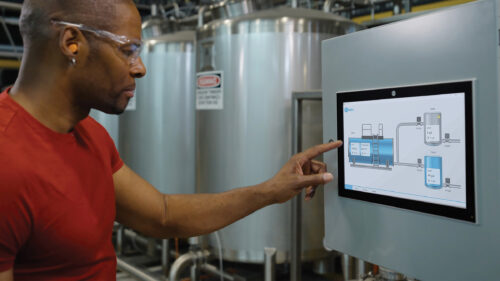Agreement: ISA, OAGi cooperate on data model standards
Research Triangle Park, NC —Standards have potential to become more useful for manufacturing interoperability when they unify, which makes them more, well… standard. Two standards-making bodies took another step toward harmonizing and expanding data models recently. ISA and OAGi (Open Applications Group Inc.) have agreed to cooperate on joint projects and exchange standards documentation. Immediate involvement includes the structure and integration of enterprise and control systems via ISA-95 and OAGIS, and ability for members to attend each others’ meetings.
The first step under this cooperative agreement includes OAGi’s commitment to express ISA-95 data models in the OAGIS standard as UML data models and OAGIS XML schema definitions (known as business object documents, or BODs). It will also recommend enhancements to the ISA-95 standard based on the content and experience of the OAGi constituency. ISA-SP95, “Enterprise-Control System Integration” is a standards series that defines the interfaces between enterprise and control activities.
Data exchange models “This memorandum arises out of an agreement to harmonize our standards as a critical step in accomplishing the goals of the Manufacturing Interoperability Guideline Working Group,” said Chip Lee, ISA director of publishing services. A year ago, the two groups announced involvement in the Manufacturing Interoperability Guideline Working Group, a collaborative venture of ISA, MIMOSA , OAGi, OPC , and WBF . (See below for more about each.) The working group supports development of an industry guideline that defines generic business process models for data exchange between manufacturing operations management and business support systems.
Union of process, discrete traditions The commitment from ISA and OAGi is said to further the objectives of the Manufacturing Interoperability Working Group and is expected to help in the development of industry guidelines. ISA-95 has historically been used in process manufacturing while the OAGIS standard typically has been used in discrete manufacturing. The opportunity to further each exists through cooperation and refinement. “The ISA-95 content is very important to all of the manufacturing end-users I have spoken with,” said David Connelly, CEO of the Open Applications Group. “The members and board of directors of the OAGi are pleased to be expressing this work in the OAGIS standard, and we believe it is the customer who wins in this tremendous example of standards organization collaboration.”
Organization members get benefits As part of the agreement, OAGi and ISA will exchange non-voting memberships on a no-fee basis so that members may attend each other’s meetings and participate in standards development activities. Voting memberships remain independent for the two organizations. The organizations will also share official minutes of all working group meetings associated with the program to help increase communication and keep everyone current.
In addition, to be in compliance with the UN/CEFACT (United Nations Centre for Trade Facilitation and Electronic Business) Core Components technology, and avoid data duplication and redundancy, the ISA-95 and OAGIS data models may have to be modified from time to time. ISA and OAGi staff and project teams have agreed to collaborate and help reconcile any differences.
For more on these organizations, see the descriptions below and their Websites.
ISA , the Instrumentation, Systems, and Automation Society, is a non-profit organization that sets standards for automation and supports more than 30,000 members worldwide.
OAGi is a not-for-profit open standards development organization building a standard called the Open Applications Group Integration Specification (OAGIS), which covers data exchange requirements for business systems and applications, including manufacturing and operations management systems.
MIMOSA , Machinery Information Management Open Systems Alliance, is a not-for-profit trade association dedicated to developing and encouraging the adoption of open information standards in manufacturing, fleet, and facility environments.
OPC Foundation is dedicated to ensuring interoperability in automation by creating and maintaining open specifications that standardize the communication of acquired process data, alarm and event records, historical data, and batch data to multi-vendor enterprise systems and between production devices.
WBF , for automation and manufacturing professionals is dedicated to exchanging information and ideas that make batch processing operations more profitable and reliable.
Also click into the related reading below:
” Onboard the ‘Unified Architecture’ train “
” Integration bus: Here to help “
” Ride the enterprise service bus “
—Control Engineering Daily News DeskEdited by Mark T. Hoske , editor in chief
Do you have experience and expertise with the topics mentioned in this content? You should consider contributing to our CFE Media editorial team and getting the recognition you and your company deserve. Click here to start this process.





